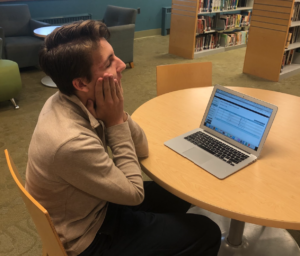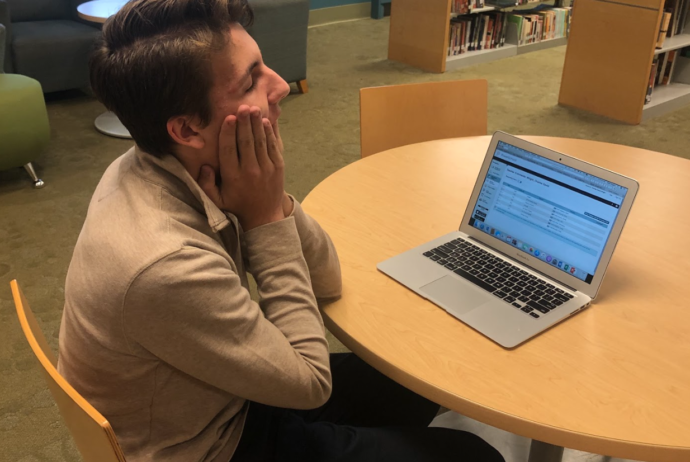
Charlie Wright ‘20 reacts to seeing his midterm grades on PowerSchool (Photo courtesy of Adam Rogers ‘20)
Midterm Grades Are Here, and Students Don’t Know What to Think
By Adam Rogers ‘20
It’s that time of year again. School has started to settle in. Teachers have been diligently educating, testing, and grading their pupils. But now we have finally reached the first checkpoint of the school year: midterm grades.
Midterm grades are the first sample of grades the students and parents of Wyoming Seminary see halfway through each term. They include the overall academic grade, an effort grade, and teacher comments from each class. These types of grades are used as a way for students to check their progress and see where they should improve before the end-of-term grades are completed.
Until the spring of the 2018-2019 school year, midterm grades were filed in the same format as the transcript at the end of each term. It included the letter grade, the effort grade, comments, and the student’s current and previous grade point averages (GPAs).
Now, however, the format of these has changed. In the midterm, students temporarily gain access to PowerSchool for ten days, which includes individual assignment grades, letter grades, and grade percentages. This program does not calculate GPA.
Many students have come to like the new changes. Phil Gristina ‘20 describes it as a “…more in-depth analysis of my grade. I get to see every class and every grade individually.” One of the features of PowerSchool is being able to see the grade of every assignment in each class, giving a more detailed break-down of the overall percentage grade.
“I like how I’m able to see my individual grades so I can know how to improve my GPA,” says Jared Weisenberger ‘20. Knowing why you are struggling in a class can help you focus on what you need to fix.
There are some downfalls to using PowerSchool to report midterm grades. “I have to calculate my own GPA, which can be scary if I get it wrong,” says Owen Li ‘20. Li, among many other students, find it nerve-wracking to guess their GPA based on their grades.
Teachers are also not entirely on board with reporting midterm grades with PowerSchool. Anne Lew believes “the ability to see your grades as a student might prohibit a really good conversation with your teacher.”


